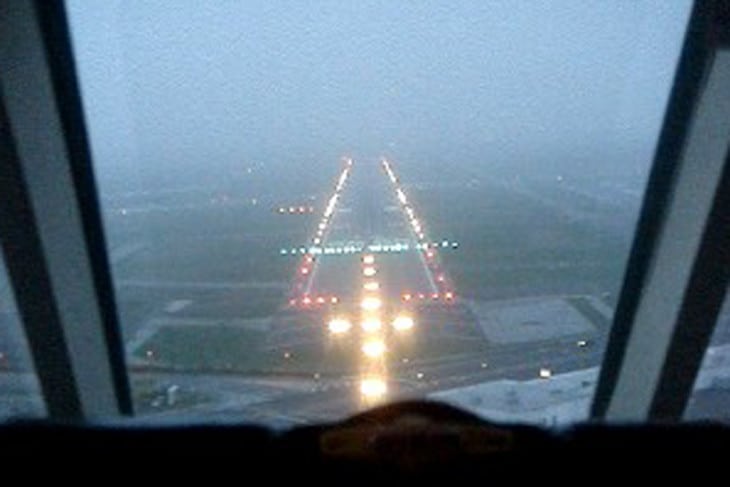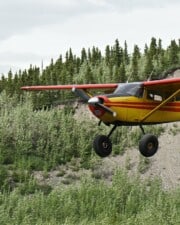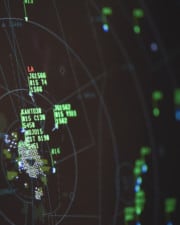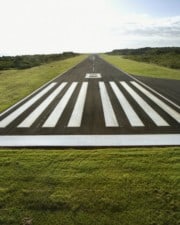Instrument flying comes with a huge bowl of new alphabet soup to swallow. Nearly all navigational aids and systems have identifying acronyms to set them apart from one another. NDB, VOR, GPS, and so on. But then, these systems can be combined into systems for specific uses, like instrument approaches (IAPs)—RNAV, ILS, LPV, APV, ADF, and so forth.
Today we’re going to look at one specific navigational tool—the localizer. But, you say, that’s a word and not an acronym! Ah, ha! Says the FAA. You may call it by its informal title, the LOC.
What is a Localizer (LOC)?
A localizer is a ground-based navigation system used by planes to navigate. It provides guidance along a single straight course.
The most common example is the LOC approach, which has a localizer aligned with the runway. The pilot can tune in the frequency and then follow the localizer course right to the runway.
The localizer is one of the main components of the ILS—the instrument landing system. An ILS approach always includes the use of a localizer. But LOC approaches are also a type of non-precision approach that you can complete without all the other parts that make it an ILS. These are just much less common.
Many ILS approaches are published as an “ILS or LOC,” meaning that the pilot may complete it either way, depending on the available equipment.
Is a Localizer a VOR?
In the cockpit, the localizer looks very similar to a VOR. It even uses the same equipment—a basic navigation radio with a CDI and OBS.
A VOR (VHF Omnidirectional Range), however, allows the pilot to set any number of courses to follow to the station. The LOC only has one course available.
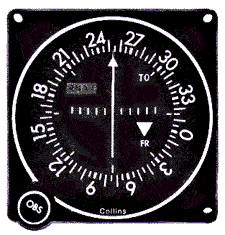
What is the Difference Between ILS and Localizer?
As mentioned above, the LOC is integral to every ILS approach. It is the part that provides course guidance to the runway. But the LOC can be used on its own, as well.
An ILS is a precision approach that provides vertical guidance to the runway. That extra information helps a pilot navigate accurately. And since they’re very precise, the plane can descend very close to the runway—within 200 feet of the ground—before the pilot needs to look outside to see the runway.
Every instrument approach comes to a point where the pilot needs to see the runway to land—the more accurate the approach system, the longer that can be held off. An ILS is the most accurate so that the pilot could be in the clouds down to 200 feet or so off the ground.
If you fly a LOC approach—or any non-precision approach—the tolerances are not as good. These approaches don’t provide vertical guidance, so the pilot cannot fly as close to the ground without seeing the airport first.
On a non-precision approach, pilots can only descend to about 600 feet above ground level, although the exact number depends on obstacles and the area’s topography.
What is ILS? The Instrument Landing System
The ILS is an amazing piece of engineering that allows aircraft to fly all the way to the runway threshold with zero visibility in some cases. Airliners and corporate jets with advanced autopilots can even auto-land on runways with a fine-tuned ILS.
An Instrument Landing System combines four components.
- Lateral guidance from a localizer
- Vertical guidance from a glideslope
- Range information from marker beacons, NDBs, or fixes (VOR, DME, RNAV).
- Visual elements, like special runway markings and lights
The ILS is discussed in detail in the FAA’s Aeronautical Information Manual, Section 1-1-9.
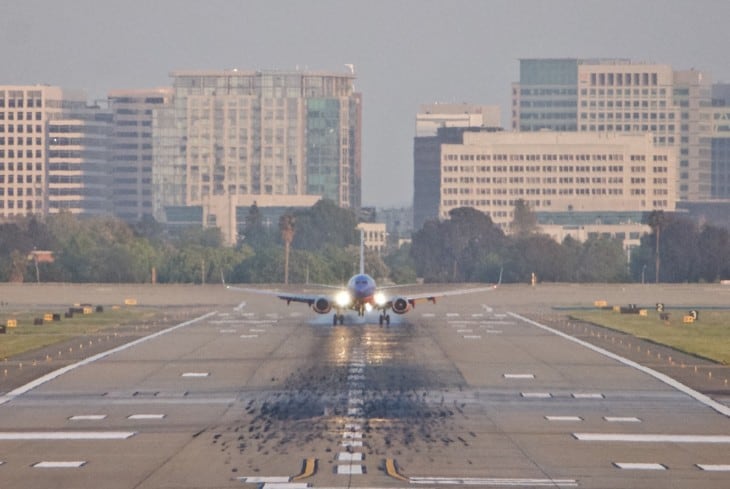
What is a Localizer approach (LOC)?
A localizer approach is designed to be flown as a standalone, non-precision approach. The localizer functions just like it would on an ILS, but you don’t have all the other fancy things you would have there (glideslope, outer markers, etc.)
Like many non-precision approaches, LOC approaches are becoming less common and harder to find. Modern RNAV approaches with WAAS are APV (Approaches with Vertical Guidance). That means they’re flown more like an ILS and less like a LOC, making them easier to set up, more effective, and safer than the old LOC technology.
How to Fly a Localizer Approach
Here’s an example of a real-world LOC approach that takes you to Runway 15 at Pompano Beach, Florida.

Setting the localizer frequency of 109.75 will tune your navigation radio to the right frequency. When receiving, you should hear the morse code ID of I-P-M-P. Localizer codes always begin with the letter “I.”
There is a note that indicates that radar is required for this approach. If you study the approach course on the chart, you’ll see that there is no way to get onto the course without help from an air traffic controller. No other Initial Approach Fix (IAP) is provided.
What is “Established Localizer” in Aviation?
The controller will provide vectors and request that the pilot report “established localizer” or “established inbound.” In this case, you have intercepted the localizer and are receiving its signal. Once the plane is on the course, the controller can clear you for the approach.
Once established inbound, which has a heading of 150º, you’ll maintain 2,000 feet until the Final Approach Fix (FAF). That fix is identified by radar or DME from the localizer (6.9 DME). If you have an IFR GPS on board, it is the JIMNY waypoint.
After JIMNY, you descend to the straight-in or circling minimum descent altitude, 580 or 660 feet, respectively.
The pilot must initiate a missed approach at 0.8 DME if the runway is not spotted. Notice that this approach only allows you to descend to 580 feet and up to 0.8 miles from the LOC antenna. So if the clouds are very low or the visibility is very bad, the LOC approach isn’t as nice as a full ILS.

What is a Localizer Back Course?
There are a few interesting variations on the basic LOC approach. The localizer back course (LOC BC) is one that is flown in reverse. Using the example above, if Pompano Beach had a back course approach, you could use it to land on Runway 33 with the same equipment.
There are a few tricks here, however. You can only fly a back course if there’s a published procedure for one. And there aren’t many of them out there.
They’re also interesting to fly because the equipment in the plane does not know you’re flying the wrong way toward the localizer. That means the indications are reversed, and you’ll have to steer away from the course to get closer to it!
Thankfully many modern planes and GPS overlays help with this problem. If the plane has “reverse sensing,” it will know and correct the back course error in advance. In that case, you’ll fly it like any other LOC approach.
What is an LDA — Localizer Directional Aid Approach?
An LDA (Localizer Directional Aid) is an approach that is made with a localizer, but not to a runway. Instead, the LDA is aligned with another point at the airport and is only flown to circling minimums.
In other words, the pilot flies the LOC into the airport traffic pattern and then circles and lands on the correct runway, given the wind conditions.
Again, there aren’t many of these approaches out there anymore.
What is an LPV — Localizer Performance Value Approach?
An LPV approach provides localizer-like performance from an RNAV system. It also has vertical guidance and is an Approach with Vertical Guidance (APV) as defined in the Aeronautical Information Manual Section 5-4-5.
In essence, an LPV is a GPS-based ILS approach. It provides vertical guidance but does not meet the technical definition of a “precision approach.”
References ▾
Related Posts
